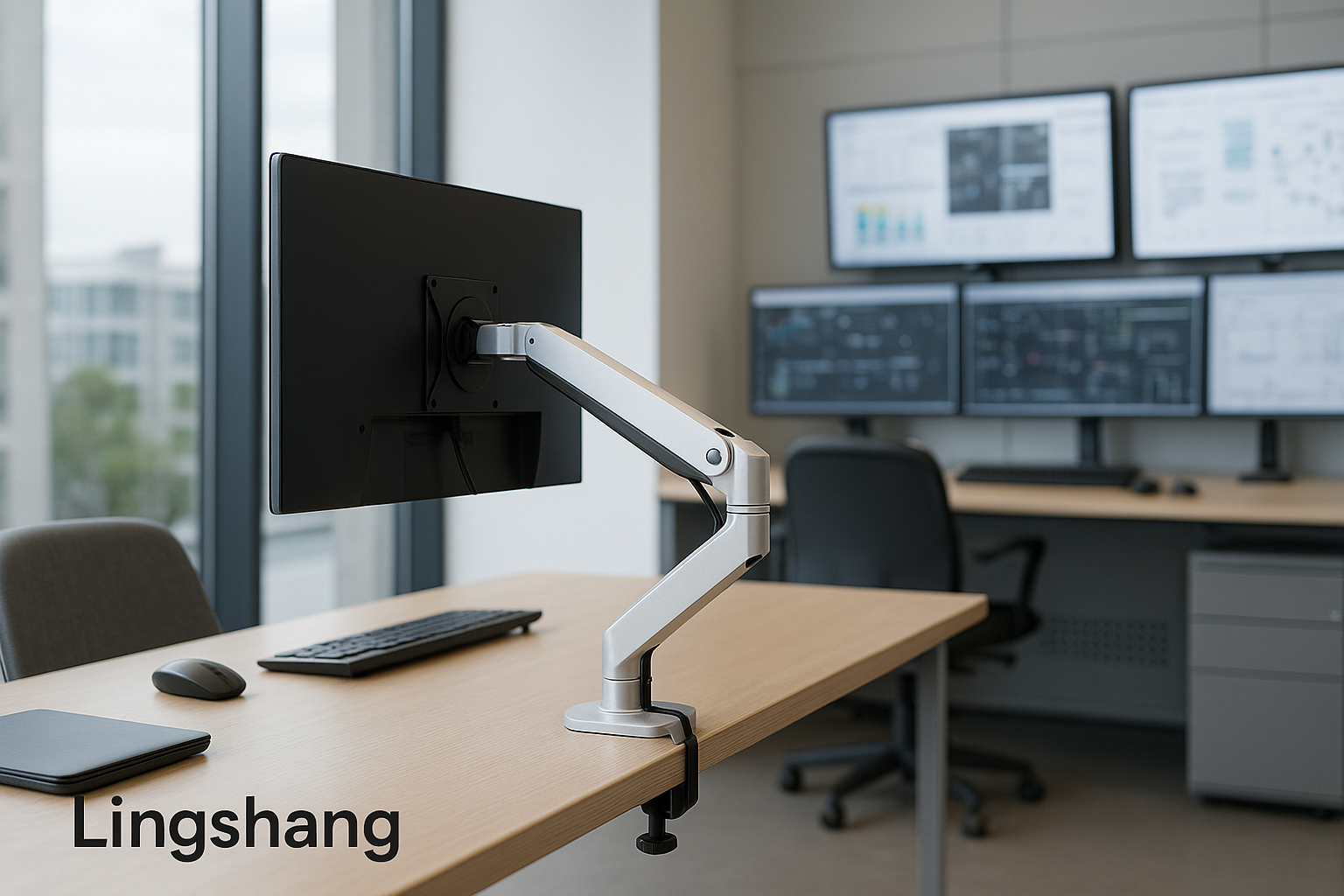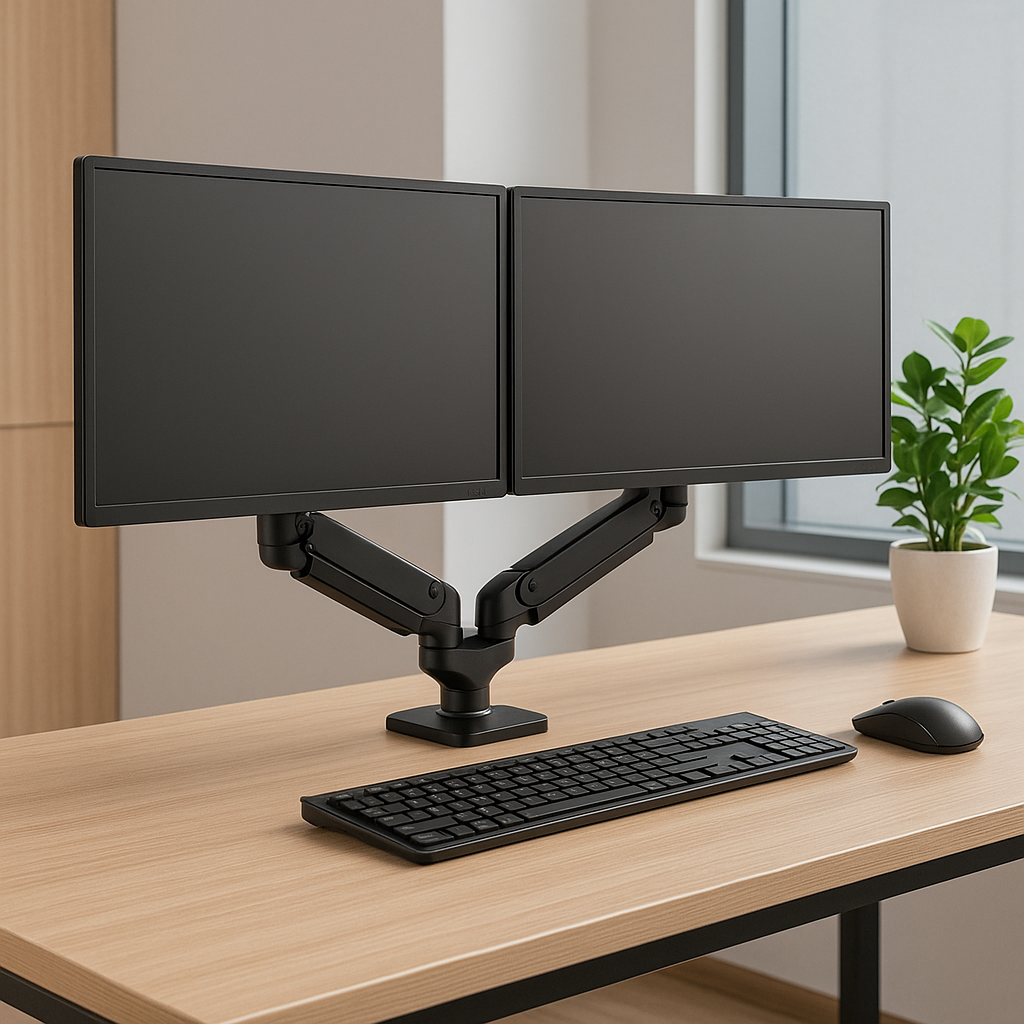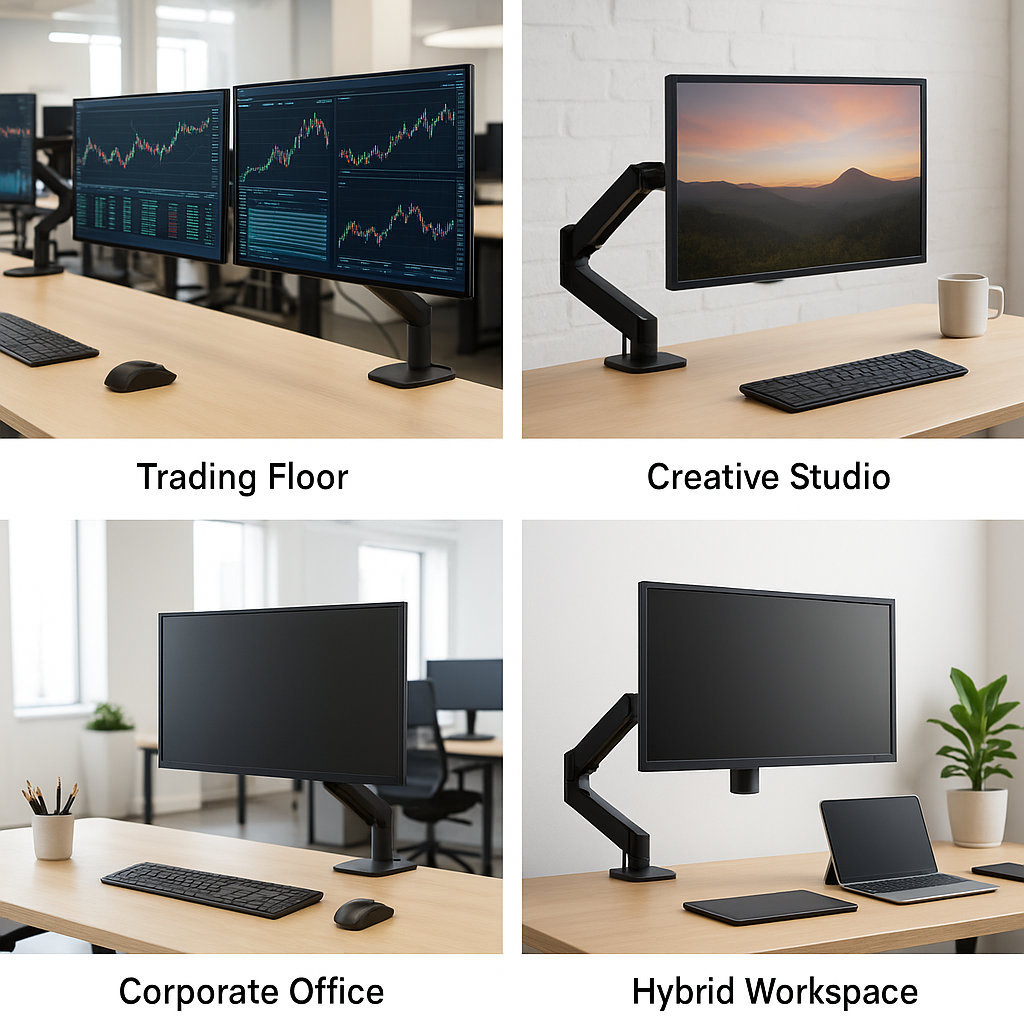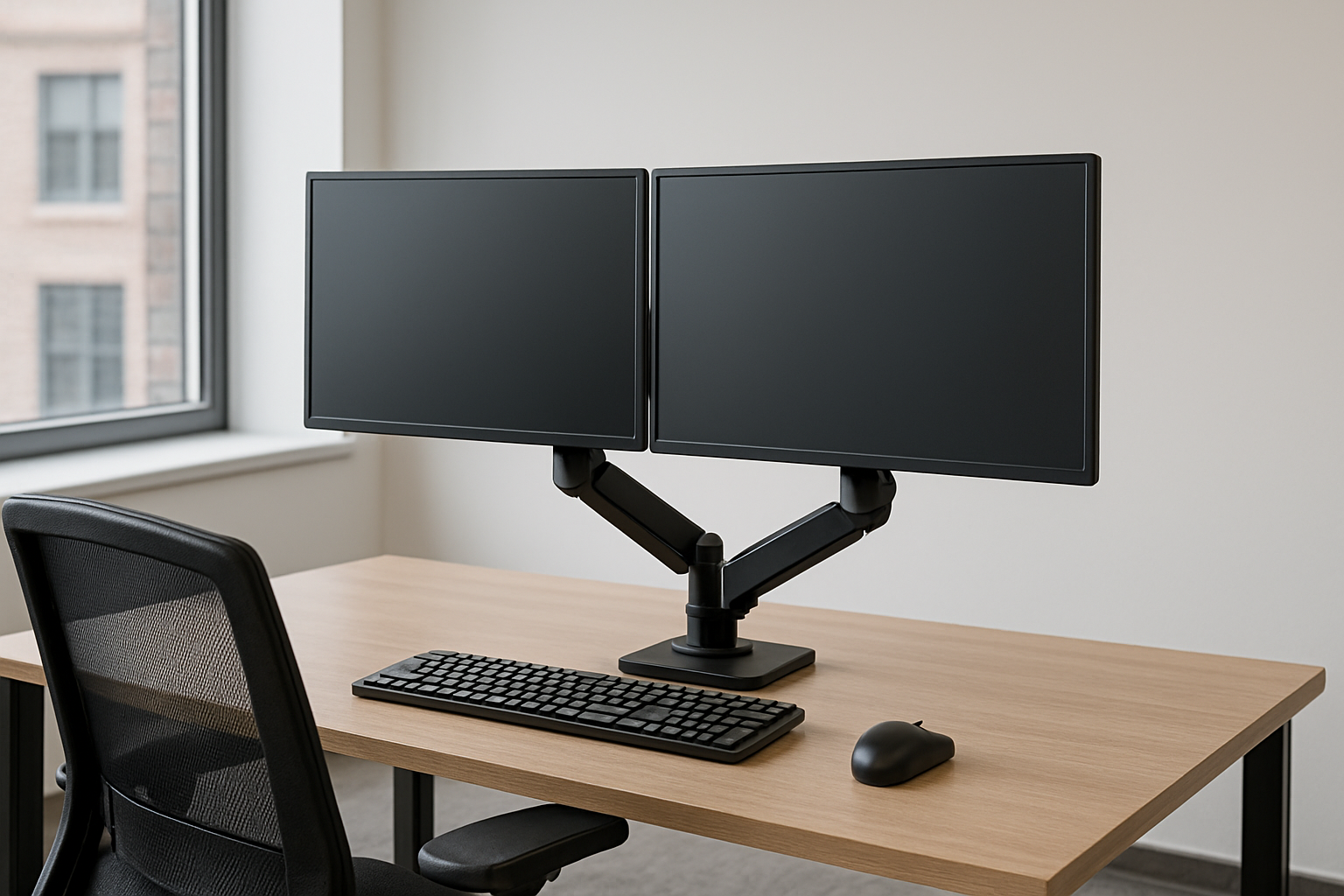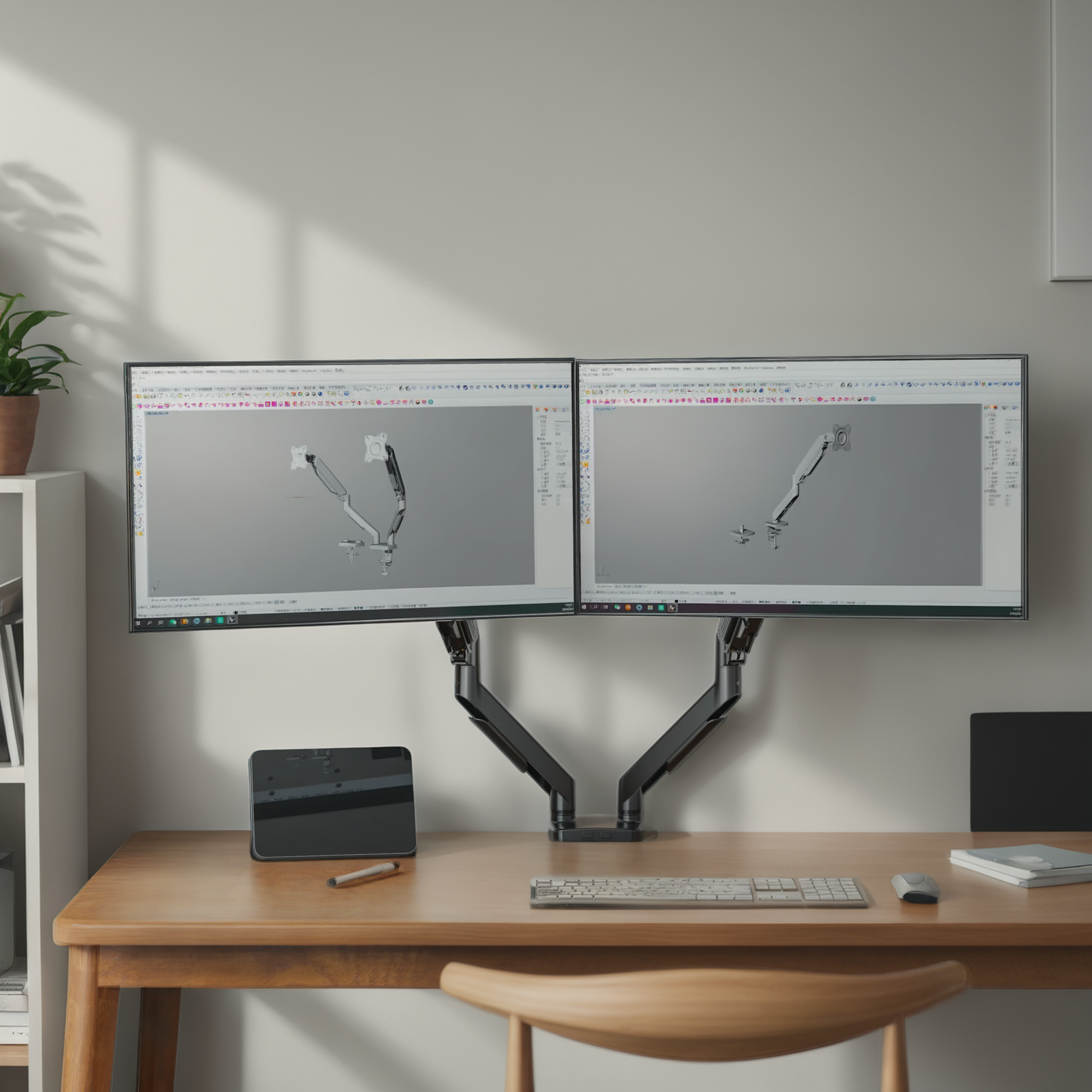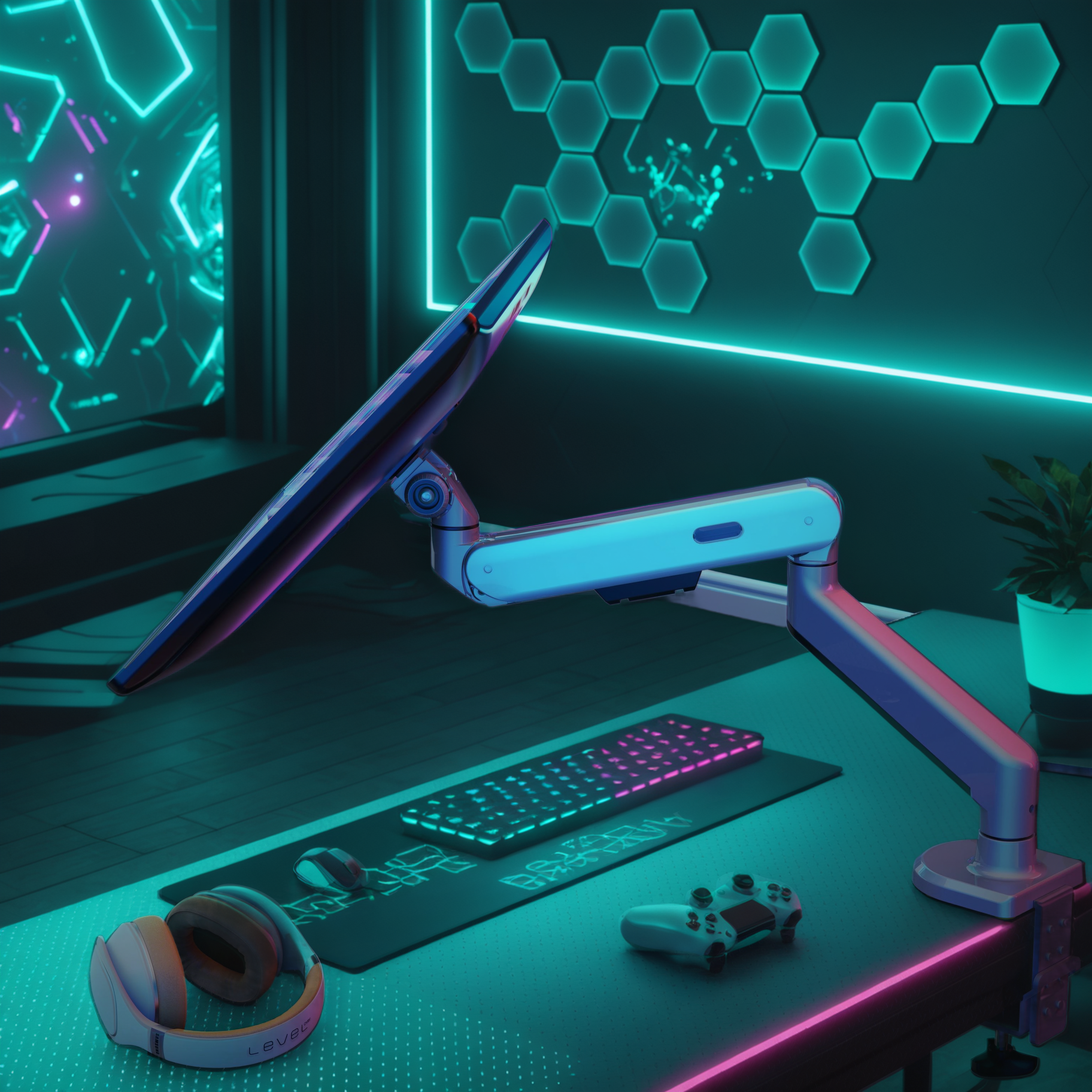
Does Your Monitor Arm Actually Fit? Avoid Costly Mounting Mistakes
Many users assume that if the arm looks sleek and has the right VESA plate, it's a fit. But a mismatched monitor arm can cause neck strain, wobbly screens, or even damage your gear.The right fit requires careful attention to size, weight, and adjustability.
Why Getting the Right Fit Really Matters
A graphic designer recently shared how her new 32-inch curved monitor constantly drifted downward after mounting—until she realized her arm was only rated for 6kg, and her screen weighed nearly 8.5kg without the base. The result? Sagging screens, poor posture, and wasted money.
According to the National Institute for Occupational Safety and Health (NIOSH), poor monitor positioning is linked toover 50% of reported desk-related musculoskeletal discomfort.
Step 1: Know Your Monitor’s Actual Requirements
Screen Size Is Just the Start
-
Weight (without base)is often overlooked.
-
Ultrawide monitorsmay require dual-arm support or extended horizontal reach.
-
Even within the same size category (e.g., 27”), weight can vary by 2–3kg.
Action Tip: Always check the product’s weight in the manufacturer specs, and compare it with the arm’s range.
VESA Compatibility Can Make or Break Your Setup
Most modern screens follow standard VESA patterns:
-
75x75mm or 100x100mm for typical displays
-
200x100mm or larger for big or curved models
No VESA mount?You’ll need an adapter or a different product altogether.
Improper VESA matches are a top cause ofunstable or unsafe installations.
Step 2: Choose a Mount That Matches Your Work Style
For Single Monitor Users (General Office or School)
-
Light to medium monitors (<6kg)
-
Prioritize arms with easytilt and height adjustability
-
Ideal for compact desks
For Creative Professionals or Coders
-
Larger screens ordual setups
-
Look forgas spring armswith wide range and high load tolerance
-
Portrait mode rotation and screen swivel enhance usability
For Financial Analysts or Streamers
-
Multiple screens with side-by-side data
-
Dual monitor arms ormulti-joint mountsare essential
-
Must handle both width and synchronized height alignment
The Hidden Impact of Mismatched Arms
-
Too weak: Arm slowly sinks, impacting posture
-
Too strong: Light monitors “float” uncontrollably
-
Too short: No ergonomic flexibility, forces awkward viewing angles
Harvard ergonomics research suggests monitor height and distance misalignment can reduce productivity byup to 17%due to constant head/eye adjustments.
Final Checklist Before You Buy
To avoid a poor fit, make sure you:
-
Know yourmonitor’s weight and VESApattern
-
Confirm thearm’s weight and size support range
-
Check theadjustment rangefor your working style
-
Choose trusted,durable hardwarewith proper certification
Choose Smarter, Work Better
Choosing a monitor arm isn’t just a technical decision—it’s an investment in yourdaily comfort,long-term health, andworkspace flexibility.
A well-matched mount does more than hold your screen. It lets you:
-
Maintain better posturethroughout the day
-
Adjust your view easilyfor different tasks
-
Clear your desk spacefor a cleaner and more productive setup
-
Adapt to new devicesas your workflow grows or changes
Whether you’re a student upgrading your desk, a designer juggling dual displays, or a professional spending 10+ hours in front of screens, the right monitor arm gives you the freedom to move, focus, and breathe.
Don’t underestimate the impact of a poorly chosen arm.It can lead to chronic discomfort, wasted time, and costly replacement.
Take a few minutes to assess your screen specs and work habits—and choose a monitor support system that’s designed to last.
You can explore reliable, screen-specific solutions on ourhomepage, where we offer flexible and tested monitor arm options trusted by users across industries.
Need help choosing the right fit for your specific setup or workflow?
Our team is here to help —contact us directlyfor personalized advice and support.

